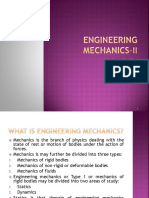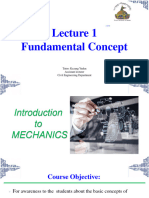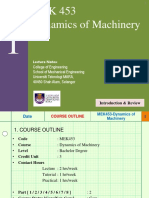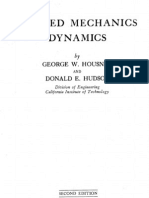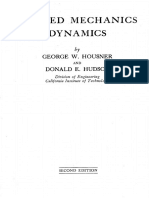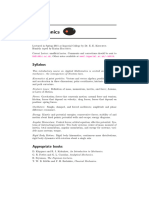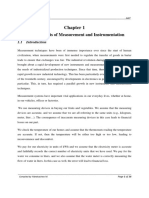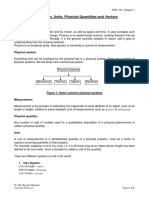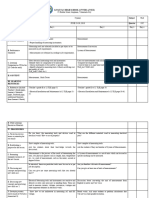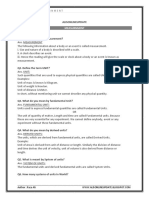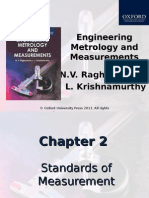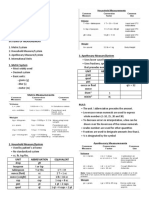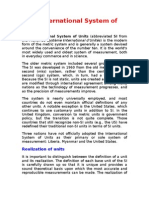0% found this document useful (0 votes)
87 views24 pagesEngineering Dynamics Course Guide
Dynamics is the branch of mechanics that deals with the motion of objects under the influence of forces. It studies both the kinematics of motion (relationships between displacement, velocity, acceleration, and time) and the kinetics of motion (relationships between forces, mass, and motion). The course covers fundamental topics in particle and rigid body dynamics including kinematics, kinetics, work-energy, impulse-momentum, and Lagrange's equations. Students will learn to apply analytical skills to solve dynamics problems and determine the effects of forces on motion. The course aims to provide a foundation for understanding dynamics principles and their applications in engineering problems.
Uploaded by
tom2003tnCopyright
© © All Rights Reserved
We take content rights seriously. If you suspect this is your content, claim it here.
Available Formats
Download as PDF, TXT or read online on Scribd
0% found this document useful (0 votes)
87 views24 pagesEngineering Dynamics Course Guide
Dynamics is the branch of mechanics that deals with the motion of objects under the influence of forces. It studies both the kinematics of motion (relationships between displacement, velocity, acceleration, and time) and the kinetics of motion (relationships between forces, mass, and motion). The course covers fundamental topics in particle and rigid body dynamics including kinematics, kinetics, work-energy, impulse-momentum, and Lagrange's equations. Students will learn to apply analytical skills to solve dynamics problems and determine the effects of forces on motion. The course aims to provide a foundation for understanding dynamics principles and their applications in engineering problems.
Uploaded by
tom2003tnCopyright
© © All Rights Reserved
We take content rights seriously. If you suspect this is your content, claim it here.
Available Formats
Download as PDF, TXT or read online on Scribd
/ 24




